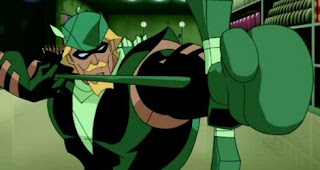The titular character of the increasingly popular hit show
on Cartoon Network, Steven Universe has a multitude of powers. These include the ability to form a
protective bubble around him and anyone in his particular vicinity, the ability
to summon a personal shield, he can alter his physical appearance to however
old he happens to be “feeling”, and he has healing spit. It’s a thing.
Anyway, I was watching a few episodes the other day, and
then most recently watched “Nightmare Hospital” when I noticed an interesting trend,
and a connection to Steven’s mother.
What we know of Connie’s mother is that she is very
protective of her daughter. She’s a mom,
its part of who they are. However she
realizes at the end of “Nightmare Hospital” that Connie’s relationship with Steven
will put her daughter directly in harm’s way, but she allows it to
continue. Why? I’ll get to that.
Connie for that matter has a rather unusual obsession with
Steven. Its beyond friend, it’s beyond girlfriend;
she learned sword fighting and was preparing to lay down her life for his
protection. What?!
Roll back to “Joy Ride”.
The “cool kids” in town want to hang out with Steven. These teenagers specifically seek out this
10-12 year old kid and actively want to spend time with him. Why?
Wait for it…
Let’s look at the various times Lars and Sadie hang out with
Steven, even allowing him a certain level of leeway when it comes to his
antics, usually with Sadie taking the sympathetic lead. Lars can be a douche, but he still follows
Steven’s call. Why? Are you starting to see a pattern?
The family at Fish Stew Pizza, Peede and Rolando’s dad, even
Mayor Dewy (the highest elected official in the town), they all will take cues
from Steven who, as stated earlier is somewhere in the range of 10-12. Now this could easily be chalked up to
standard kid’s show story telling.
Obviously when you are appealing to a kid’s demographic, you want a kid
to be your most important character, but if we turn a corner, we find something
interesting.
Rose Quartz. Pearl is
so wrapped up in who Rose was she devoted her entire life to her. Garnet left Homeworld to be by Rose’s
side. Amethyst, a gem grown on Earth
hitched her wagon to Rose’s star even though she was probably being grown to be
part of an army for Homeworld.
We find out a very small clue in Jail Break when Jasper says
“Nothing is more important than Rose Quartz…”
We know through storytelling and exposition that the Gems have been on
Earth for literally thousands of years, that entire time separated from
Homeworld, but thousands of years later and still Rose Quartz is a
priority. Why?
Because of Rose, and by extension Steven’s true power; the
power to inspire people.
I know that sounds very schlocky, but it’s a very real
thing. That power exists and it’s not
within everyone. Martin Luther King Jr
had it. Martin Luther, during the
Catholic Reformation period had it, John F. Kennedy had it, kings and queens
across the ages had it. Ghandi and other
holy men across history had it. It’s a power
to draw people to your side, to draw them to your cause, to make them feel like
they are more important now than they ever have been and that everything in
their lives have led up to this moment, to whatever this cause is.
Adolf Hitler had this power.
Osama Bin Laden had it, Charles Manson had it, David Koresh had it, and
they, along with countless others across history had drawn masses to their
agendas using this same power.
That is why, after thousands of years of silence, the very
idea that Rose Quartz could still be active sends chills up Homeworld’s
spine. That power, the power to inspire
a revolution, is probably the most dangerous power of all. And it all makes sense when you apply it to
Steven.
Why do all these people believe in Steven when common sense
and their eyes tell them they should probably get as far away from him as possible? He’s a target, a trouble magnet, but they
follow him into life threatening situation after life threatening situation
because he inspires them. By being next
to him, by having him in their lives, they feel they are part of something
greater. To pull a line from Pearl about
Rose Quartz, Steven makes them feel like they are “Everything…”
Thanks for reading.






